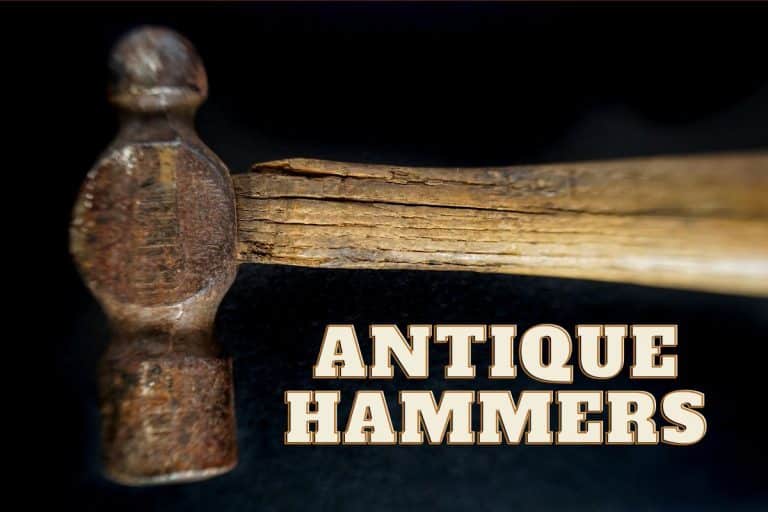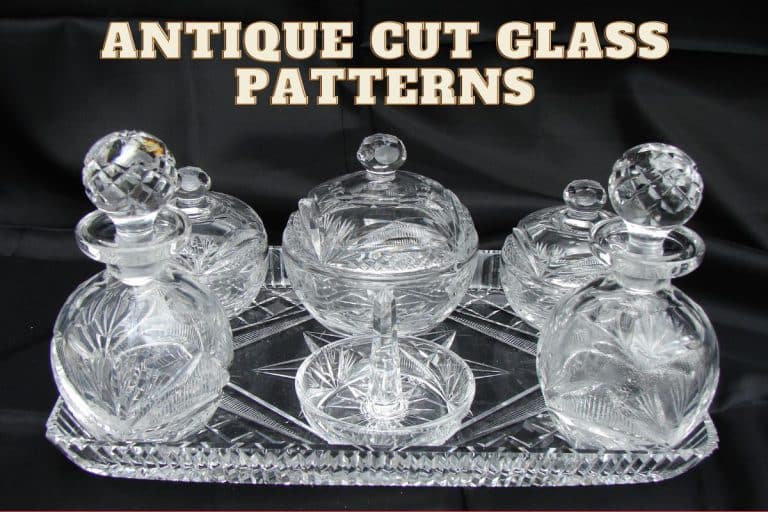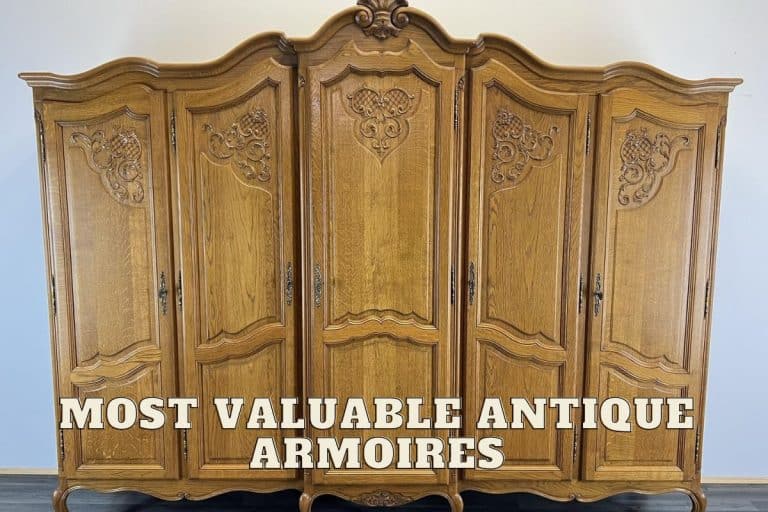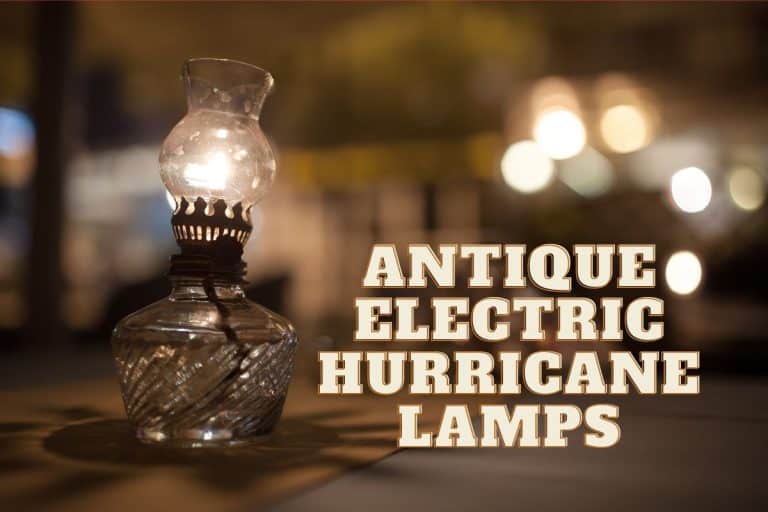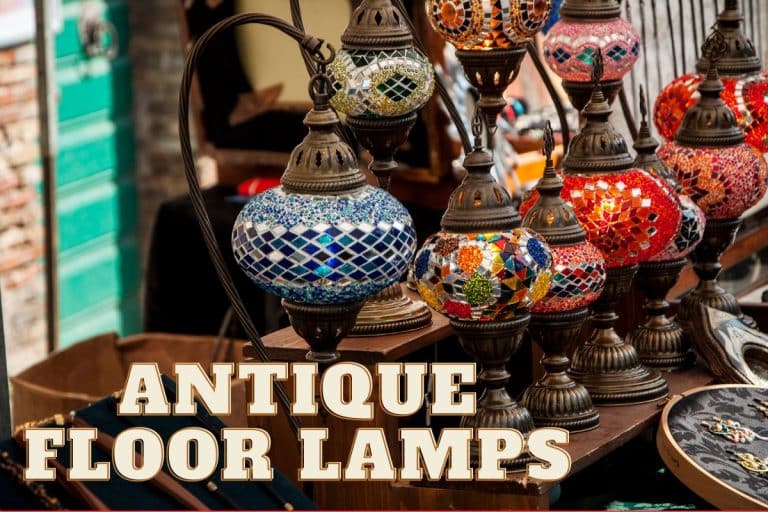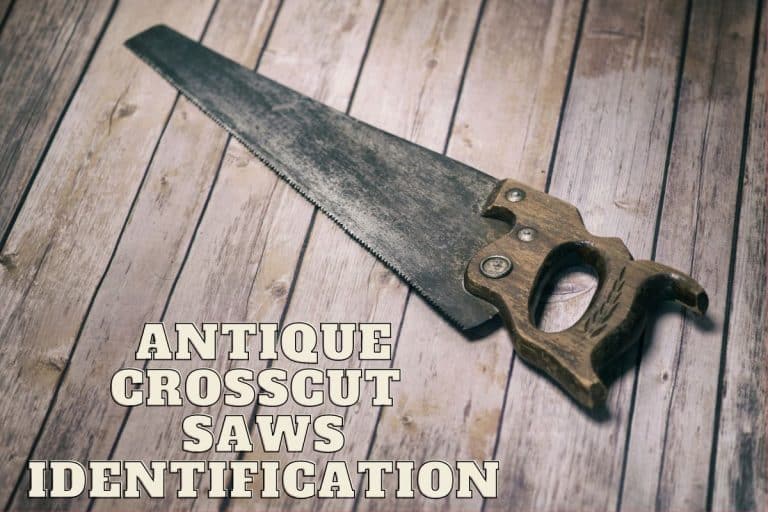Antique crystal decanters served as vessels for serving wine in the 17th century, and by the 18th century, decanting had become popular. Discover the value and history of antique crystal decanters in this guide. Learn about the different types and how to identify rare pieces.
Antique crystal decanters are a beautiful blend of art and functionality. Decanters were first used in the 17th century as vessels for serving wine drawn from a bottle or barrel, making serving and cleaning up easier.
They are designed to preserve alcohol, prevent it from falling flat, and bring out the flavors and aromas of the drink. Continue reading this article to know more about antique crystal decanters, including how to identify their value, the different types available, and their fascinating history.
The History of Antique Crystal Decanters
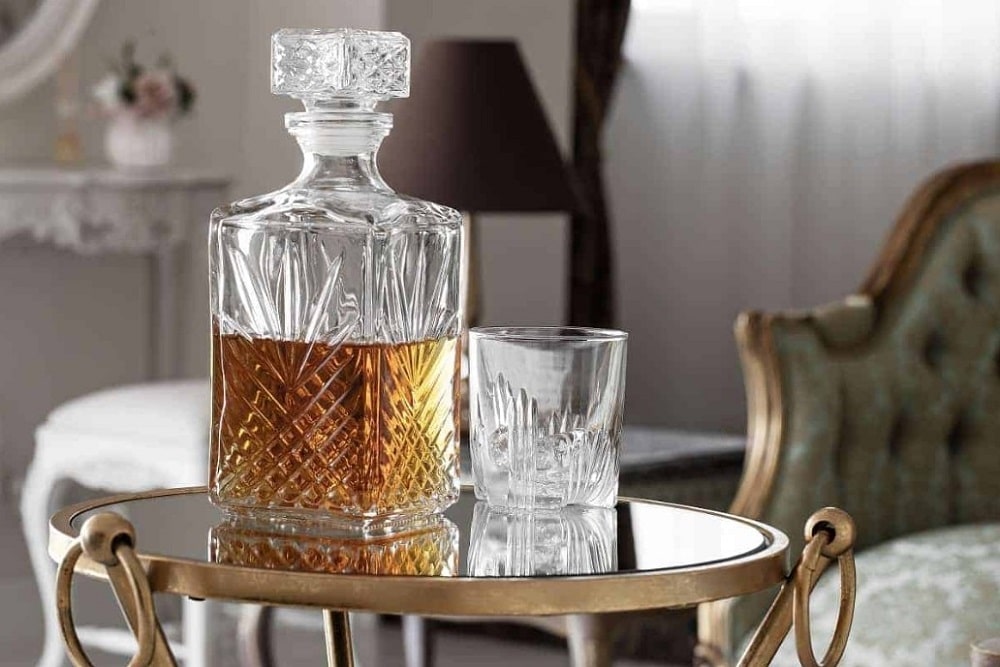
Antique crystal decanters have come a long way since their earliest usage over two millennia ago. In ancient times, earthenware was the norm for serving wine until the advent of glassware.
The 17th century witnessed the emergence of decanters as a more convenient means of dispensing and cleaning wine. By the 18th century, decanting had become a widespread practice, particularly in the UK, and it continued to gain popularity across Europe. Today, antique crystal decanters are highly coveted collectibles cherished for their exquisite designs and cultural significance.
Antique Crystal Decanters Value
Antique crystal decanters are valuable, but their worth depends on design, quality, and demand. Online auction sales and antique dealers offer opportunities for buyers and sellers. Crystal decanters are the most prized. A 1970s whiskey decanter sells for $221, down from $245, while a Silver and Cut-Glass Claret Jug decreased by 52% from its original value.
Decanters in perfect condition fetch more than those with damage. Here are some of the most expensive decanters ever sold at auctions:
- Tequila Ley .925 Diamond-Crusted Sterling Decanter - The most expensive decanter worldwide, valued at $3.5 million. Encased in platinum and silver with over 4,000 cut diamonds.
- Highland Park 50-Year Old Decanter - Current value of around $25,000
- Baccarat Crystal Decanter - Valued at $190,000, with four whiskey glasses included
Different Types of Antique Decanters
Antique decanters come in various shapes and designs, each suited for different types of alcohol. The primary purpose of a decanter is to preserve the quality of the drink and prevent it from falling flat. Here are some types of antique decanters:
Later Styles Of Glass Decanters:
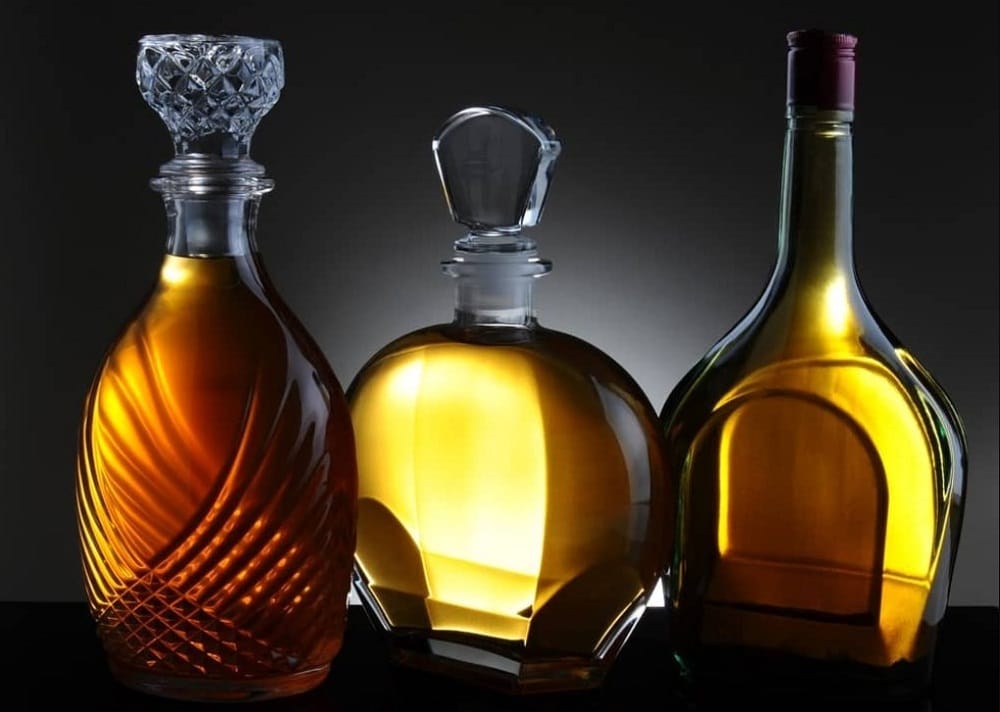
The iconic decanter design with three neck rings was introduced in the 1820s and 1830s, and they came in either a bullseye stopper or a mushroom stopper. Colored decanters of this design were also produced.
String Rim On Decanters:
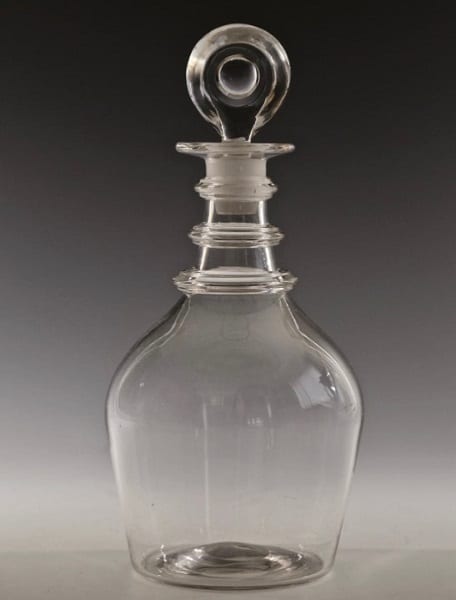
The straight-sided mallet decanter, or octagonal bottle, became fashionable in the 1730s, featuring a single-string rim on the huge, six-sided, long-necked glass bottle. Early bottles had a thin glass rim around the neck to secure a muslin cloth or cork by wire or string before introducing fitted glass stoppers.
Squat-Shape Antique Glass Decanter:

This clear glass decanter has a squat onion or shaft and globe shape, long narrow necks, and loop handles added. They were serving bottles from the late 17th century, and few can be found in museums today.
Cruciform Antique Crystal Decanters:

This cruciform decanter was introduced between the mid-1730s and the late-1750s, featuring a cross-sectional look, especially when viewed from the underside. Some of the earliest examples of this design are the real cruciform, while the later ones are more box-like and have straight sides.
Colored Antique Glass Decanter:

The late 18th and early 19th centuries welcomed large quantities of little colored decanters, commonly found in blue glass, amethyst, and green varieties. They’re often adorned with fake gilded labels for liquors like rum, brandy, and hollands. These are a great option if you seek a beautiful assortment of decanters in various colors and shapes, and they’re usually reasonably priced.
Pontil Scar On Glass Decanters:

These mid-18th-century decanters have a simple shaft and a globe-shaped serving bottle with a rough base called the pontil scar, where a pontil iron was attached and pushed upwards so that the scar wouldn’t harm a polished surface.
Antique Decanter Patterns and Designs
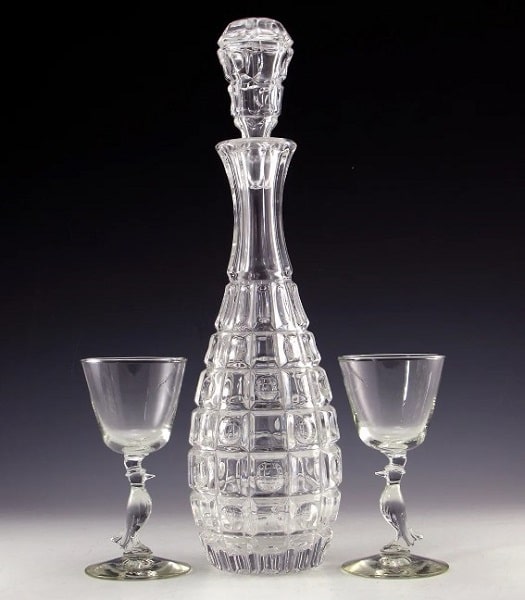
If you're looking to start a collection of antique decanters, you should know that each piece has a unique history. Here are some examples of antique decanters with different patterns and designs that you may come across:
- Antique Decorative Glass Decanters With Peculiar Patterns or Shapes: Check for the cut of the glass and the company's logo to ascertain authenticity. Machine etching was used to make the Pall Mall decanters and other glassware with curly or triangle patterns in the early 20th century.
- Lalique Decanters: René Lalique, a French glass craftsman, designed an Art Deco-inspired frosted glass container with feminine silhouettes and fish patterns at the bottom of clear crystal that dates back to the 1900s.
- Old European Wine Decanters: A Dutch Amethyst wine bottle from the 1750s is shaped like a genie's wand with a dark amber-colored glass ribbed all around. A black glass decanter from the early 1700s has a simple shape with a seal at the bottom.
- Antique Whiskey Decanters: Ceramic decanters encased in a basket-weaved cover date back to the late 1880s. Royal Leerdam Glassworks designed one of the popular whiskey decanters in 1927. Special edition decanters from Jim Beam and other whiskey distilleries were also common.
- Vintage Silver Wine Decanters: American silver genie bottles with intricate stoppers and designs reminiscent of the Art Nouveau era were prevalent from the early 1900s to 1909.
Common Mistakes to Avoid When Collecting Antique Crystal Decanters
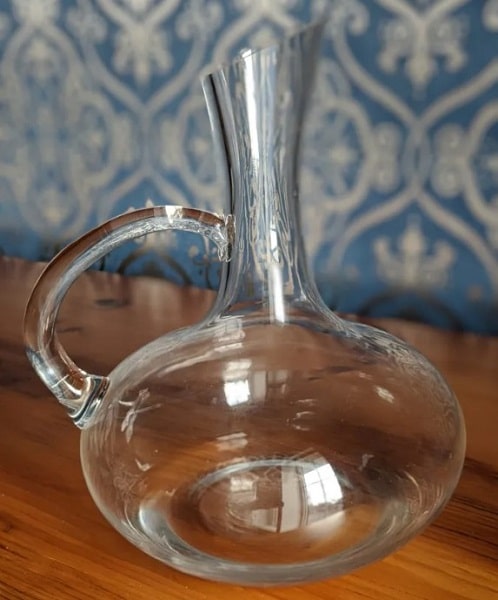
- Buying Fake Antique Crystal Decanters: Collectors of Georgian or Victorian decanters need to be wary of fakes in circulation. Look for wear and tear as indicators of authenticity and ask for receipts from the seller to ensure you're getting the real deal.
- Wrong Attribution: Some dealers may misattribute antique pieces, leading to incorrect valuations. Always do enough research to understand what you're purchasing and its true value.
- Failing To Verify The Manufacturer: Knowing who produced the decanter is essential in determining its value. Check for engraved names on the bottom of the decanter and pay attention to small details. Some manufacturers may be extremely rare or have fakes in circulation.
- Choosing the Wrong Stopper: One of the most common mistakes collectors make is buying a decanter with the wrong stopper. To avoid this, always check if the stopper fits properly and looks like it belongs with the decanter. Additionally, look for etched numbers that match on both the decanter and stopper, indicating they were manufactured together.
- Not Checking For Damages: A damaged decanter significantly reduces its value. Always inspect the decanter thoroughly for cuts, cracks, or other damage before purchasing.
- Purchasing A Cloudy Decanter: Decanters with limescale buildup may appear murky, but this can be fixed with proper cleaning. However, if the decanter has bloom or is moist on the inside, it may indicate damage or poor storage conditions.
Tips for Authenticating Antique Decanters

Decanters have a unique shape that sets them apart from other containers, making them ideal for serving alcoholic beverages. They have been around for centuries and have become popular among collectors in recent years. But how can you tell if a decanter is a genuine antique? Here are some helpful tips:
- Design and style: Examine the overall design and style of the decanter, as this can offer clues about its age and origin. Antique crystal decanters come in various shapes, sizes, and styles. Look for intricate patterns, cuts, or engravings that may be indicative of a particular era or manufacturer.
- Quality of the crystal: The quality of the crystal can give you an indication of the decanter's age and origin. Antique crystal is often heavier and more transparent than modern crystal. It may also have a distinct "ring" when gently tapped, and you may see tiny air bubbles or imperfections, which can be a sign of hand-blown glass.
- Maker's marks or signatures: Check the decanter for any maker's marks, logos, or signatures that may be etched, stamped, or engraved on the bottom or sides. This can provide valuable information about the manufacturer and help you determine the age and origin of the decanter. Well-known crystal manufacturers include Baccarat, Waterford, and Saint-Louis, among others.
- Type of stopper: The type of stopper used in the decanter can also provide clues about its age and origin. Early decanters may have cork or glass stoppers, while later decanters often feature elaborate crystal stoppers with matching patterns to the decanter itself.
- Provenance: If possible, gather information about the decanter's history, such as previous owners or where it was purchased. This can provide valuable context and help you determine the authenticity and value of the decanter.
- Consult reference materials and experts: Research antique crystal decanters using books, online resources, or by consulting with experts in the field. This can help you identify patterns, makers, and styles, as well as provide guidance on the value and authenticity of your decanter.
Conclusion
Antique crystal decanters have a rich history dating back to the 17th century when they were used for serving wine. Today, antique crystal decanters are highly coveted collectibles due to their exquisite designs and cultural significance.
Different types of antique decanters include the iconic decanter design, string-rim decanters, squat-shape decanters, cruciform decanters, and colored antique crystal decanters. Antique decanters come in different patterns and designs, each with its unique history. Collectors should be cautious of fakes when buying antique crystal decanters.

